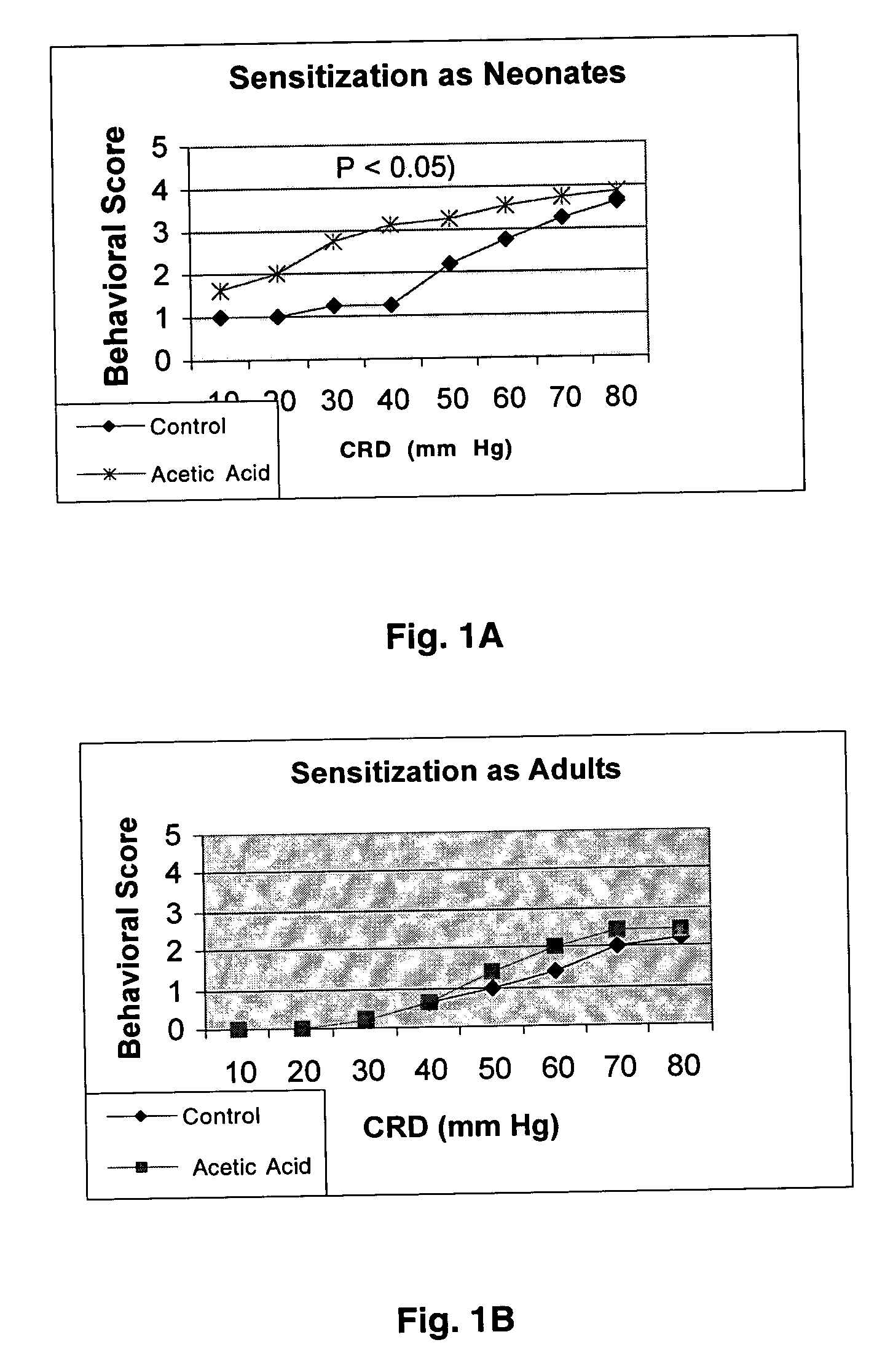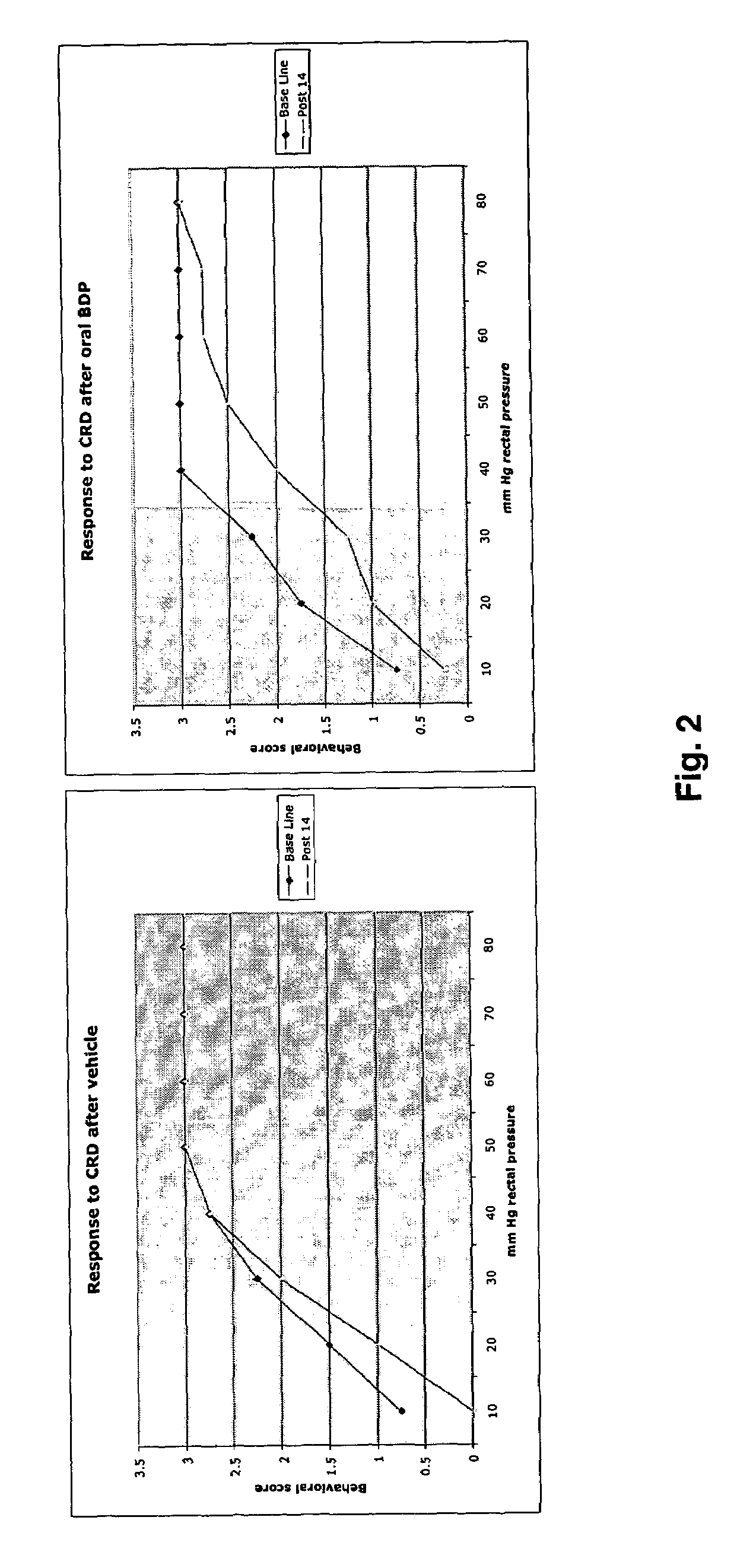Treatment of irritable bowel syndrome and related bowel diseases
a technology for irritable bowel syndrome and related bowel diseases, applied in the direction of medical preparations, pharmaceutical delivery mechanisms, microcapsules, etc., can solve the problems of affecting the treatment effect, and affecting the effect of bowel movement, so as to achieve minimal or no systemic side effects
- Summary
- Abstract
- Description
- Claims
- Application Information
AI Technical Summary
Benefits of technology
Problems solved by technology
Method used
Image
Examples
example
Effect of Oral Beclamethasone Dipropionate (BDP) on Acetic Acid Sensitized Rats
[0035]Neonatal sensitization with acetic acid: Description of the model. It was previously shown that transient noxious stimulation of the colon during postnatal development can cause long-lasting hyperalgesia, despite complete resolution of the initiating event. In a variation of this technique, 0.3% acetic acid was instilled into the rectum of rats at postnatal days 7-10. This results in sustained hyperalgesia and allodynia to graded colorectal distention as measured between weeks 4-12, using both behavioral assays and visceromotor reflexes (using EMG recordings from the anterior oblique muscle). By contrast, when rats are treated with acetic acid as adults, and tested after a similar period of time, no sensitization is observed.
[0036]Sprague Dawley rat pups were sensitized on neonatal day 10 with acetic acid. In brief, a thin polyethylene tubing (P-90 was introduced gently into the rectum 2 cm from the...
PUM
 Login to View More
Login to View More Abstract
Description
Claims
Application Information
 Login to View More
Login to View More - R&D
- Intellectual Property
- Life Sciences
- Materials
- Tech Scout
- Unparalleled Data Quality
- Higher Quality Content
- 60% Fewer Hallucinations
Browse by: Latest US Patents, China's latest patents, Technical Efficacy Thesaurus, Application Domain, Technology Topic, Popular Technical Reports.
© 2025 PatSnap. All rights reserved.Legal|Privacy policy|Modern Slavery Act Transparency Statement|Sitemap|About US| Contact US: help@patsnap.com


